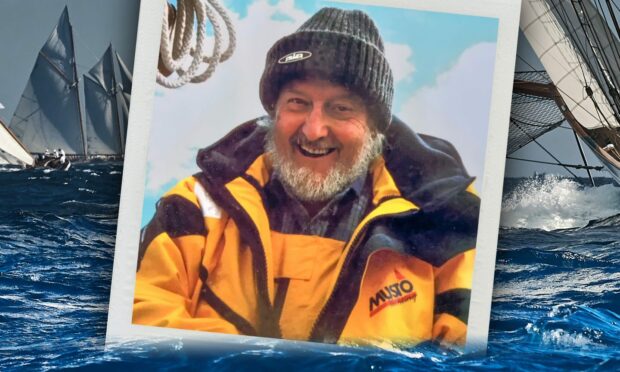John Amson of Anstruther, well-known polymath and former senior lecturer in pure mathematics at St Andrews University, has died just a month before his 96th birthday.
The son of a Liverpool grain merchant, he was born in 1927 not far from the city’s buzzing docks.
Throughout his life he retained a love and intellectual curiosity concerning the sea. He organised the annual sailing muster at Anstruther, for which he received an award for services to sailing in Scotland, and through his academic work in tidal prediction was to deepen the understanding of tidal behaviour and its importance for the greater safety of shipping throughout the world.
Artistic talent
John left school at only 15, but thanks to a skill in architectural drawing, acquired in the Bohemian orbit of Liverpool Art School, soon became an articled pupil in chartered surveying and, by 1949, a precocious senior planning officer at Yorkshire County Council.
He was already teaching himself mathematics in his spare time however, and in 1954, wrote a highly original essay on mathematics and aesthetics which won him a scholarship to Reading University.
John had met his first wife, Margaret Newson, in 1950 and when she became seriously ill with heart failure, was permitted to care for her and their young son, Christopher, in a caravan on the campus until her early death in 1957, the year before he graduated with a first-class degree.
Research and discovery
Looking for a suitable environment in which to continue to bring up his, by now, six -year-old son, John then joined a rurally situated residential physics research institute on the outskirts of Cambridge.
It was there he at once made a surprise breakthrough concerning cold welding in space and was delegated to address conferences all over Europe and America.
The award of the Churchill College Research Scholarship meant he was able to study for a PhD in functional analysis, finally to be appointed in St Andrews as lecturer in pure mathematics, which he regarded as the ultimate art/science discipline if not the “applied maths of tomorrow” as he once said.
The rise of the new technology was already on the way by that time and, ever the pioneer, John had already acquired first-hand knowledge of the earliest computers.
He accordingly worked with a grant from the Centre for Environmental Studies on the application of computerised methods for the prediction of the growth of modern cities.
Change of direction
During the period of government cuts in 1982, he took early retirement and set up a company to develop and market the first software package for accurate tidal prediction in the public domain.
Retirement was in name only however. There followed many an enabling innovation such as place-adjustable sundials, differential gears for tidal clocks, geological research for tidal range lagoons in Scotland and multiple exploratory maths and physics papers as president of the Alternative Natural Philosophy Association which he had co-founded in Cambridge years before.
John will perhaps be remembered more locally for his detective-like research into the life and work of the 17th century Scottish astronomer and fellow natural philosopher James Gregory.
This led, in 2014, to the extension across the pavement in South Street, St Andrews, of the meridian, established some full 200 years before the Greenwich line was used to measure standard time.
In 1969 John had married Christine Crow, a lecturer in the St Andrews French department appointed from Cambridge four years earlier like himself.
“Johnny Amson had so much to do, it wasn’t true. He hadn’t even time to die”, was the self-written epitaph she found in one of his many exuberant log-books near the end of his life; that famous wry humour for which, together with his inspiring passion for democratic reform, thumbs-up sign in adversity and warm, self-effacing generosity of spirit, he was known and loved by so many colleagues and friends across the world.
You can red the formal announcement here.
